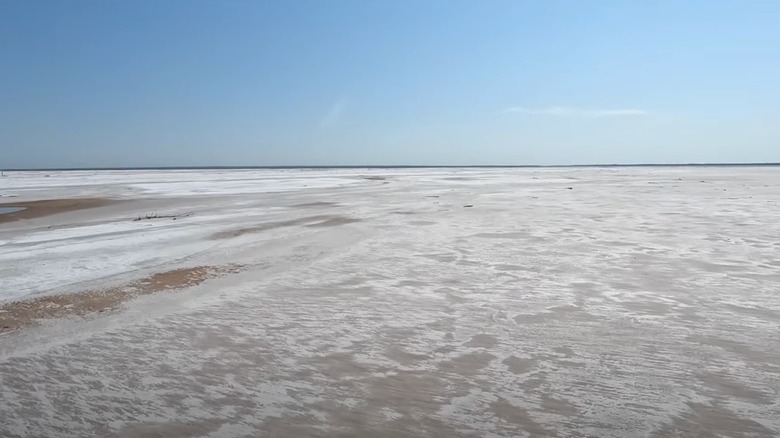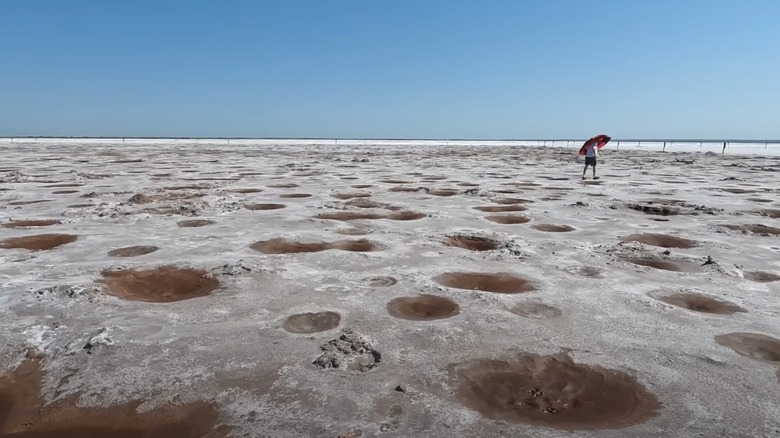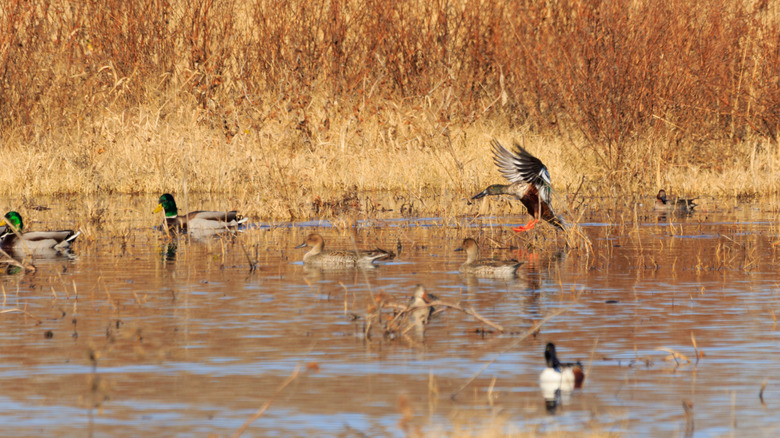Oklahoma's Iconic Refuge Offers Crystal Digging, Scenic Trails, And Birdwatching In A Unique Salt Flat Setting
The Sooner State boasts nine wildlife refuges, each offering a one-of-a-kind adventure in a different setting. For instance, when you're enjoying a serene escape in Medicine Park, considered America's cobblestone community, you can visit the Wichita Mountains Wildlife Refuge, the oldest of its kind. Better yet, make your way to the north-center near the Kansas border, and you'll arrive at an unexpected destination in Oklahoma. Salt Plains National Wildlife Refuge comprises 32,197 acres of prairie, wetlands, and, of course, salt flats. It's a sight so magnificent you'd think you're at Salar de Uyuni in Bolivia, the world's largest natural mirror — but no, this is just a hidden gem in Oklahoma, hiding activities that are even more extraordinary.
Millions of years ago, the constant fluctuations of ancient sea levels caused the water to recede for good. As a consequence, it deposited a thick layer of salt, which created the Great Salt Plains as we know them. Native American tribes such as the Osage, Kiowa, and Wichita knew the value of this area and used its rich resources to preserve meat. On top of that, it was a favored hunting territory, known for its abundant bison, elk, and deer populations. Soon came salt mining expeditions, followed by protecting the migratory birds' species. In 1930, the salt plains were officially recognized as a wildlife refuge, where people have the rare opportunity to dig for hourglass selenite crystals, a phenomenon that's found nowhere else.
Getting to the Salt Plains National Wildlife Refuge is quite easy — Oklahoma City is around two hours away, while the drive from Tulsa takes 2.5 hours. Coming from Wichita, Kansas, you'll be on the road for one hour and 45 minutes — it takes the same amount of time from the small city of Guthrie and its cool and trendy downtown.
Prepare for unique experiences at Salt Plains National Wildlife Refuge
The salt plains within the refuge cover about 12,000 acres of the total space, and one of the best things about it is digging for hourglass selenite crystals. These iconic crystallized forms of gypsum are only found in Oklahoma. They're the official state crystal, too — the salt plains have produced selenites as long as 7 inches and as heavy as 38 pounds. Unlike the usual white, purple, and blue crystals, these have a distinct chocolate brown hue, which is a result of the iron oxide detected in the soil. The hourglass shape, on the other hand, comes from sand and clay trapped inside the crystal. The digging season lasts from April 1 to October 15, with enthusiasts bringing along sun tents (since there is no campground at the refuge) to discover as many selenites as they can. The most prevalent selenite shape you'll encounter is a single blade, but the lucky ones might come across penetration twins.
For a successful crystal-digging expedition, you need to have the right tools with you, such as a hammer, shovel, and bucket. Selenites can be pretty sharp, so make sure to wear gloves when handling the crystals. There's no shade at the salt plains — wear sunglasses and put on sunscreen when you visit. Other things you need to bring are water for both drinking and rinsing purposes, as well as extra shoes and clothes.
Upon choosing your excavation site, dig a two-foot square hole with your shovel. Once you dig down to a wet, sandy spot, rinse it with water to remove the soil and check for crystals. If you hit the jackpot, don't rush to take it out just yet — keep rinsing and leave them to dry before heading to another site.
Birding is common along the nature trails
More than 300 species of birds call Salt Plains National Wildlife Refuge their home, with the endangered whooping crane being an important part of the ecosystem. In fact, almost 500,000 birds stop by during the migration season. In wintertime, the sky is full of soaring eagles. As the season changes to spring, waterfowl flock to the salt plains and stay here throughout the fall months. As you explore the refuge, you'll also stumble upon snowy plovers and interior least terns building nests atop the piles of soil.
The 2-mile Eagle Roost Trail is a lovely hike that anyone can complete. Winding through marshes and grasslands, this is the perfect trail to observe whooping cranes in October, November, and late March. Sandhill cranes are frequent visitors between October and April. Those following the 1.8-mile Jet Recreation Nature Trail are expected to spot golden and bald eagles flying overhead in January and February. There are several picnic tables dotted along the trails, and you can even set your rod during the fishing season, which is from April 1 to October 15. Meanwhile, the short, half-mile Sandpiper Trail takes you to an observation deck, where you'll catch a glimpse of fox squirrels and armadillos.
Scenic drives are very much a part of the refuge's experience. Cruise the 4.9-mile Harold F. Miller Auto Tour Route for panoramic views of the wetlands and marshes, with a couple of turtle sightings, too. Hunting is permitted at Salt Plains National Wildlife Refuge with the right permits. Most people eye white-tailed deer, spring turkey, pheasants, geese, quail, ducks, and other animals in the public hunting area. Oklahoma is full of similar underrated destinations, and more activities await at its renowned archaeological site in the small town of Spiro.


